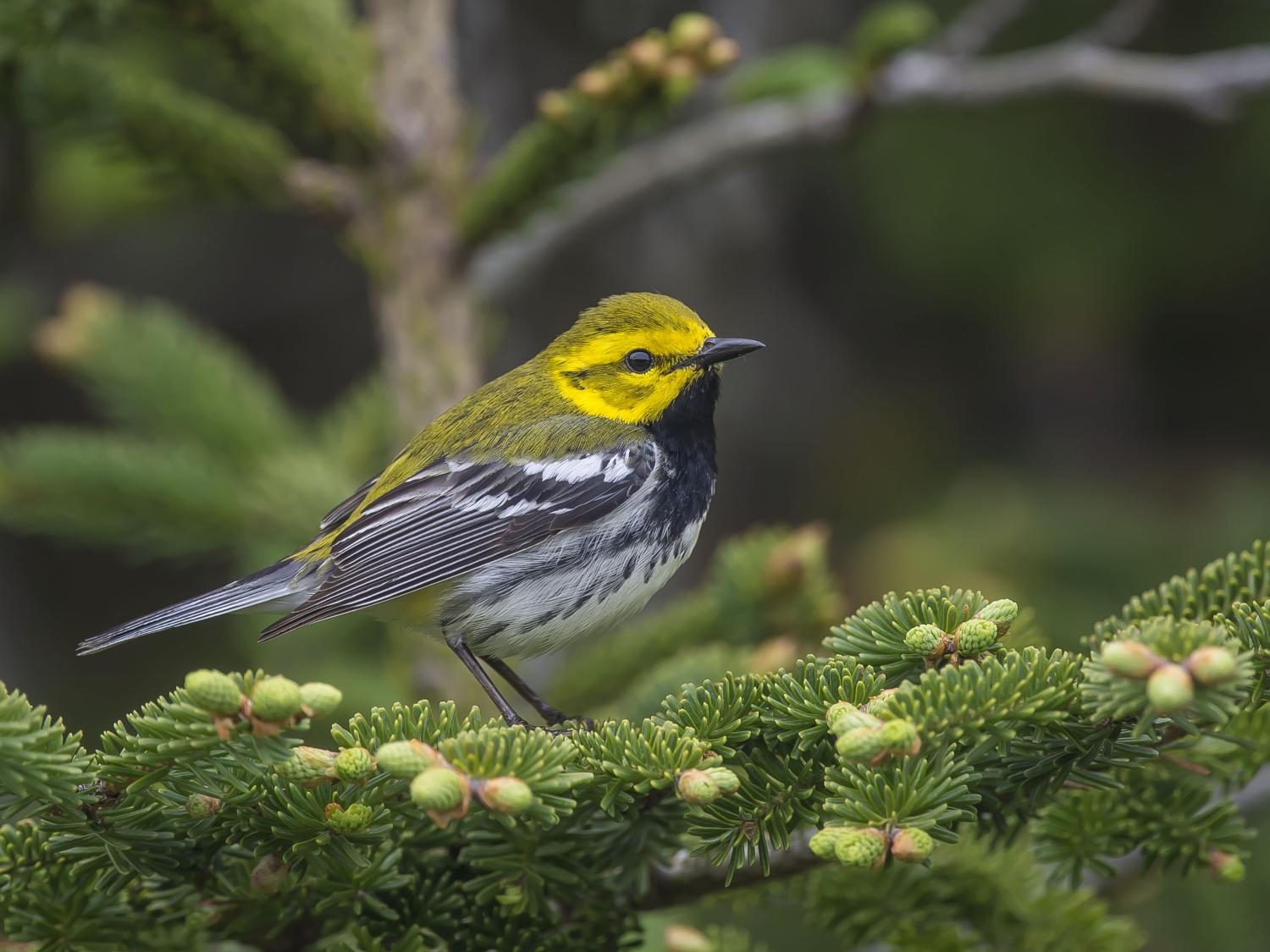2025-04-16 ペンシルベニア州立大学(PennState)
 A new study used modern methods to reassess a foundational study in biology that explained how ecologically similar species of wood warblers coexist. The research team examined foraging behavior, physical characteristics, diet and evolutionary history of 13 warbler species, including the black-throated green warbler (Setophaga virens) pictured here, and found that how these songbirds coexist is more nuanced than originally proposed. Credit: Ronnie d’Entremont. All Rights Reserved.
A new study used modern methods to reassess a foundational study in biology that explained how ecologically similar species of wood warblers coexist. The research team examined foraging behavior, physical characteristics, diet and evolutionary history of 13 warbler species, including the black-throated green warbler (Setophaga virens) pictured here, and found that how these songbirds coexist is more nuanced than originally proposed. Credit: Ronnie d’Entremont. All Rights Reserved.
<関連情報>
- https://www.psu.edu/news/eberly-college-science/story/foraging-wing-how-can-ecologically-similar-birds-live-together
- https://royalsocietypublishing.org/doi/10.1098/rsbl.2025.0001
マッカーサーウグイスにおけるニッチ分割の再評価:系統的文脈における採餌行動、形態、食餌の分化 Reassessing niche partitioning in MacArthur’s warblers: foraging behaviour, morphology and diet differentiation in a phylogenetic context
Eliot T. Miller,Andrew W. Wood,Marcella Baiz,Andreanna J. Welch,Robert C. Fleischer,Adrienne S. Dale and David P. L. Toews
Biology Letters Published:16 April 2025
DOI:https://doi.org/10.1098/rsbl.2025.0001
Abstract
Owing in large part to Robert MacArthur’s classic research, wood warblers in the family Parulidae are textbook exemplars of species competition and niche partitioning. Conventional wisdom suggests that subtle differences in foraging behaviour are the principal means by which these nearly morphologically indistinguishable species are able to co-occur and avoid extinction. Yet, MacArthur’s study was in fact quite limited in scale, and he said little about the relevance of evolution to the study system. Here, we reassess MacArthur’s conclusions across an expanded set of syntopic warbler species in a forest in northern New York. We combine morphometrics, quantitative foraging data and faecal metabarcoding—a direct measure of warbler diet—to study competition and niche partitioning in an evolutionary framework. We find close relationships between morphology and foraging behaviour, but little connection between warbler ecomorphology and the 2237 invertebrate taxa detected in their diets. Instead, diet remains phylogenetically conserved—closely related warblers eat similar suites of invertebrates, regardless of where they forage. Finally, we present evidence that these species not only partition niche space in the present day but also that competition has shaped their behaviours over evolutionary time.


